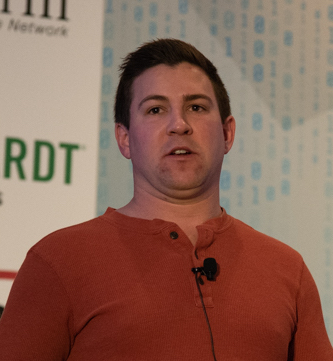With precision ag tools, we were miles ahead in utilizing grid testing, soil sampling, tissue sampling, aerial imagery and now drones, which has been great. We’re taking it one step further to utilize agronomic zones and the Haney soil health test, which gives us our phosphorus (P), potassium (K), pH and organic matter, but also plant available nitrogen (N) in the nitrate, ammonium and organic form, organic, P and inorganic P, micronutrients, carbon in the soil and biological activity.

Soil health is one of the biggest buzzwords and it’s definitely sticking around. A couple of years ago, it seemed like a fad, but it’s not. Sustainability is here to stay. Soil health is here to stay. Transparency from farm to fork is here to stay. Technology continues to help this happen even faster.It boils down to being able to talk to customers about the principles of soil health: minimizing disturbance, keeping armor on the soil, keeping living roots at all times, keeping cover crops or more diversity in our operations, getting out of only farming corn and soybeans. For many of the customers you work with, looking at the profitability of changing things up and maybe integrating livestock as well.
As we’re implementing more sustainable practices and soil health methods and having conversations with our customers because they’re reading about it in magazines, we need to be able to have data to help guide them and show them where they are at now and where they’re going.
For the Haney soil test, we utilize Brookside Labs, Ward Labs, or the Ag Soil Regen Lab to get good consistent data. We’re working directly with Dr. Rick Haney, who developed the soil test as well.
Dr. Haney is a USDA soil scientist and the extraction they use is more representative of the plant exudate, or what that plant is actually seeing in the soil. We have precision tools now that can help our customers be super specific. If we’re going to utilize precision ag, we have to have good data going in to create a better decision. This tool is how we do that.
We utilize our Continuum Ag RightWay Program and we’re able to scale the system by wholesaling this program on the backend of their consultants, agronomy companies and precision dealers. It’s not expensive to do this stuff and the cost to the farmer ends up about the same as they pay for grid sampling today. To interpret the data, we built the TopSoil Tool where data can be managed, and action can be implemented. The system is web-based to manage this information from your phone, iPad, or computer as you’re having a conversation with a farmer. This is the first system to manage soil health data.
What we’re able to do is track through these different soil data layers like carbon and biology activity and these new parameters that we haven’t really quantified before. Now, we can actually toggle through those layers as you are field scouting.
It tracks your location in real time, and you can toggle through management data layers to utilize this more advanced information, differentiate our operations, and provide that next layer of agronomic value to the customer.
Essentially, we’re going from grid soil sampling, which has helped us get to where we are now, to utilizing zones to fine-tune this even more. We’ve got the equipment to do it, we’ve got the know how to do it.
Cashing in on Credits
Carbon credit markets are one example. There are a couple of different groups working on this and companies like Walmart or Fedex made a $200 million commitment to developing these markets. These groups are saying that we have a large carbon footprint, with our equipment, shipping and industry we’re emitting a lot of carbon dioxide into the atmosphere.
With social pressure and consumer-facing pressures on their sustainable emissions, they want to offset their carbon footprint. They can only clean up their supply chain and do so much internally such as making engines that are more fuel efficient, shortening supply chains, etc.
To offset the rest of their carbon footprint, they’re asking farmers to put that carbon back into the soil. Now farmers are going to be able to be rewarded for this based on tons of carbon stored in the soil. We’re able to quantify some of that carbon. Having this conversation with growers is super important and a way they’re going to be able to be more profitable going forward.
As farmers, building carbon in the soil and organic matter means improved water holding capacity, better nutrient holding capability, better efficiencies and more money in my pocket. They’re going to pay us to pump more carbon into our soils, which helps us agronomically.
Same thing for improving our impact on water quality and nutrient efficiencies, utilizing our precision equipment to its maximum potential. Seeing that return on investment through better input utilization and improved yields, but now a consumer-facing dollar as well. We know we have to be able to infiltrate water, reduce flooding and improve our water usage so we’re less susceptible to weather issues.
Quality Control
Crop quality is the last one. Crop quality is already a key metric that’s going to continue to be even more important across the supply chain to connect with consumers and driving quantifiable value. Tools like a hand-held, real time nutrient density reader are already in development.
As a consumer is in the grocery store, they take this device and go to meat, bread or vegetables and scan the nutrient density. These are going to be at scale and we know that improving nutrient density of the crop starts with the soil on the farm, and that’s where we can help.



![[Technology Corner] A Big Step Forward for Interoperability & Data Sharing](https://www.precisionfarmingdealer.com/ext/resources/2025/12/12/A-Big-Step-Forward-for-Interoperability--Data-Sharing.webp?height=290&t=1765565632&width=400)


